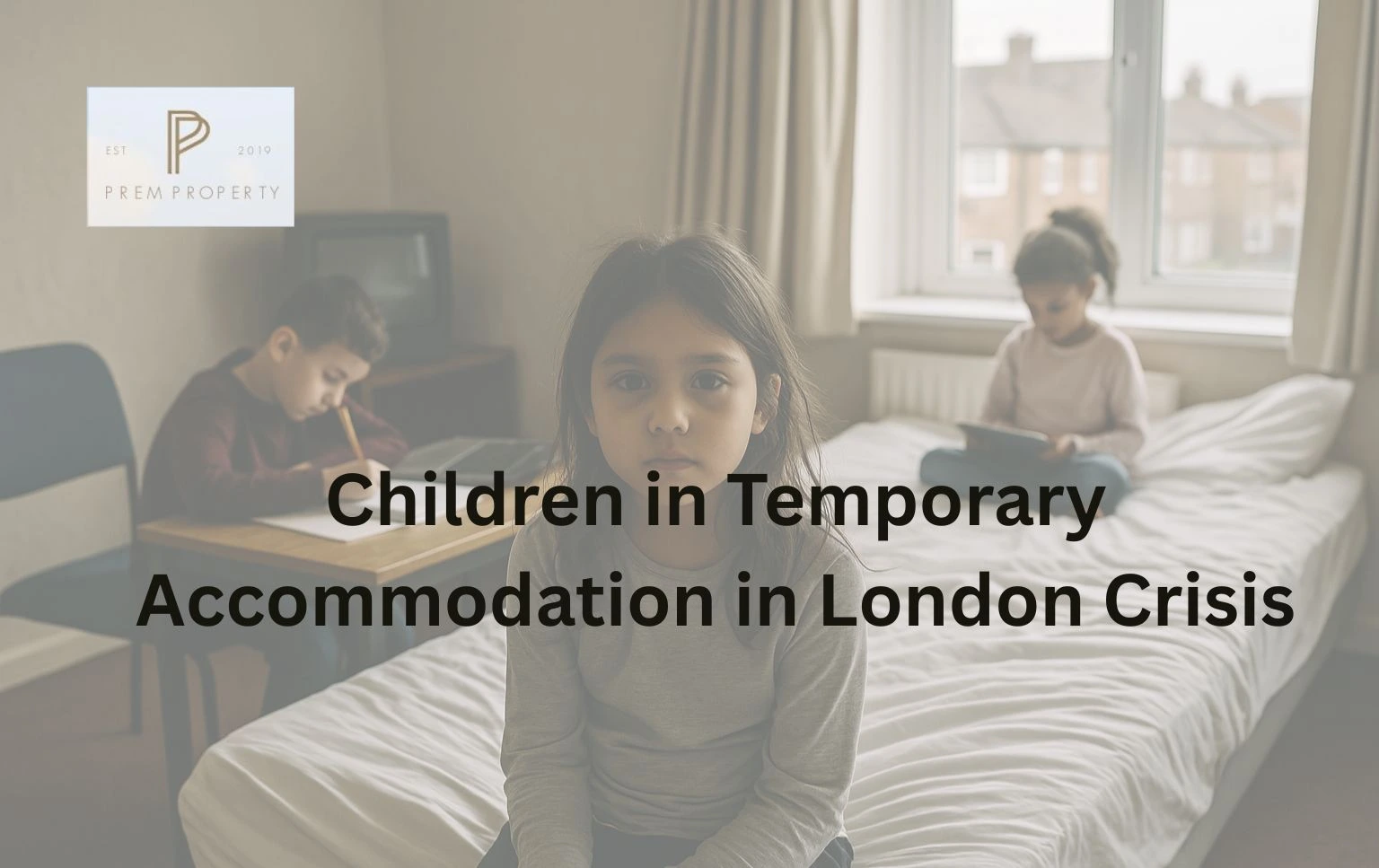The heartbreaking reality of children in temporary accommodation continues to unfold across London, demanding urgent action from all levels of government.
Families across the capital are struggling silently, forced into unstable living conditions while battling the emotional and financial toll of homelessness daily.
A Growing Number of Children in Temporary Accommodation
A recent analysis by London Councils shows that boroughs currently house approximately 90,000 children in temporary accommodation.
This staggering number translates to one in every twenty-one children in London lacking a permanent home—a crisis that appears in nearly every school classroom.
Moreover, the data highlights a deeply concerning rise in child homelessness, which threatens to cause lasting damage to education, mental health, and overall family wellbeing.
As a result, children living in unstable housing situations often endure frequent school transfers, disrupted sleep, and limited access to quiet spaces needed for learning and play.
Why Temporary Accommodation Isn’t a Long-Term Solution
Temporary accommodation may provide an overhead roof but often lacks the stability, safety and space necessary for a child’s healthy development.
Many families are placed in overcrowded B&Bs or single-room studios, far from schools, support networks, and vital public services in London.
These environments are unsuitable for long-term habitation, yet families can remain stuck in them for months—sometimes even years—without resolution.
Such conditions breed stress and uncertainty, making it incredibly difficult for children to feel safe, thrive academically, or build social connections.
The Cost of London’s Housing Crisis on Local Councils
London boroughs are grappling with the highest housing and homelessness pressures in the country, spending £4 million daily on temporary housing.
This marks a 68% increase in just one year, draining budgets and leaving councils struggling to maintain quality and sustainability in service delivery.
As costs rise and suitable properties become scarcer, councils often choose the “least-worst” options for vulnerable families.
Though difficult, these choices reflect the reality of a system under extreme strain that urgently requires reform and national-level investment.

Exploring Temporary Accommodation Guaranteed Rent Solutions
Many boroughs in London have turned to guaranteed rent solutions as part of temporary accommodation strategies to help alleviate housing shortages.
These solutions involve working with private landlords who lease their properties to councils with guaranteed rental income, reducing financial risk.
Guaranteed rent solutions motivate landlords to provide housing for vulnerable families, broadening temporary accommodation choices throughout the capital.
This model increases the available housing stock for councils while offering families more stable placements than emergency B&Bs or shared studio flats.
It also helps reduce the need for costly nightly-rate accommodation, easing financial pressures and enabling councils to focus on raising property standards.
Although not a long-term fix, guaranteed rent programmes represent a valuable bridge while permanent affordable housing is still under development.
To be effective, these schemes must be regulated appropriately, prioritise child welfare, and align with quality standards under local inspection programmes.
If scaled responsibly, temporary accommodation-guaranteed rent solutions could significantly improve outcomes for children experiencing homelessness in London today.
Raising Standards Through Coordinated Efforts
To address poor living conditions, London boroughs launched the Setting the Standard programme to inspect high-risk accommodations such as B&Bs and studios.
This collaborative effort aims to identify substandard housing, remove bad providers, and raise overall standards for children in temporary accommodation citywide.
The initiative has made significant strides, but broader change relies on increased funding, legislative support, and long-term housing availability across London.
Councils are also working to reduce placements outside the capital, which only shifts the problem and increases pressure on other UK regions.
Secure Housing Supports Education and Mental Health
Stable housing is the foundation for educational success, childhood development, emotional security, and the overall health of a growing young population.
When children lack consistency in their environment, their academic performance suffers, leading to disrupted learning paths and fewer long-term opportunities.
They also face a greater risk of anxiety, depression, and behavioural issues, which place additional strain on schools, healthcare providers, and social workers.
The situation calls for more than temporary fixes; it demands a system prioritising children’s rights to safe and supportive home environments.
What Local Leaders Are Calling For
Cllr Grace Williams, London Council’s Executive Member for Housing and Regeneration, has voiced deep concern over these growing numbers and their impact.
She emphasised the need for urgent government support to improve housing availability and reduce reliance on short-term accommodation across boroughs.
Local leaders want better funding models, long-term investment in social housing, and policies that reflect the real cost of keeping families safe.
Councils are committed to solutions, but without adequate resources, efforts to reduce the number of children in temporary accommodation remain hindered.
Local Housing Allowance Must Be Reformed
One key issue is the frozen Local Housing Allowance (LHA), which limits how much support low-income families can receive for private rent.
London Councils reports that only five per cent of rental listings in the city are affordable under current LHA rates—insufficient.
They argue that LHA should reflect real market values and be updated annually to help struggling families avoid homelessness.
Making the recent increase in LHA permanent is essential, as it will help protect thousands of vulnerable households from displacement and instability.
The Need for a National Homelessness Strategy
Tackling child homelessness cannot be left solely to local councils—it requires a coordinated national strategy from multiple government departments.
This strategy should prioritise early intervention, sustainable funding, and cooperation between education, housing, welfare, and health services nationwide.
With national leadership, the UK can begin to reverse the rising number of children in temporary accommodation and prevent future homelessness crises.
Effective action must combine political will, adequate resources, and genuine commitment to children’s futures—anything less is a failure of duty.
Investment in Affordable Housing Is Crucial
The root of the homelessness crisis lies in the chronic shortage of affordable homes—especially those available to low-income and vulnerable families.
Boroughs are urging the government to boost long-term grants for building social and affordable housing that meets the real demand in London.
More housing options would reduce competition among councils, alleviate pressure on temporary accommodation, and offer children a genuine chance at stability.
Without significant investment, the cycle will continue, pushing more families into overcrowded rooms and children further from the futures they deserve.

Every Child Deserves a Safe Place to Call Home
This issue goes beyond housing—it’s about dignity, opportunity, and making sure no child falls behind due to the failures of the housing market.
Children living in temporary accommodation are far more than statistics—they are students, siblings, and future leaders who deserve a safe foundation and equal access to opportunities.
As London continues to expand, we must also intensify our efforts to create a city where every child can dream, learn, and thrive—free from the fear of instability.
By combining effective policies with genuine compassion, we can turn temporary accommodation into a short-term stepping stone, rather than a long-term reality for families.
Final Thoughts: Turning Compassion Into Action
Addressing the issue of children in temporary accommodation is one of the most significant social responsibilities we face in modern-day London.
We must act with urgency, fairness, and unity—because behind every statistic lies a child whose future depends on the decisions we make today.

